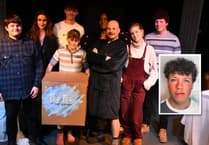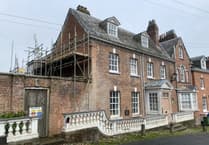A WELL-known Cornish sculptor and potter has died aged 81, who from the mid-1970s fulfilled a parental dream of a traditional pottery workshop at Wenford Bridge, Cornwall.
Christopher Seth Mason Cardew, born November 11, 1934, was the eldest son of potter Michael Cardew and painter Mariel Russell.
He was known to many as Seth, and was the eldest of three, was know for his magnificent platters, bowls and large jugs and his freehand fluency in painting pots was said to be ‘breathtaking’. He developed designs pioneered by his father and potter Michael Cardew.
Seth was born in a wooden hut, in an orchard, behind his father’s first pottery at Winchcombe, Gloustershire.
Early in 1939 the family took in four Basque refugee children, whose bravery and beauty made a deep impression on Seth. Later that year the family moved to Wenford Bridge because Seth’s father thought himself as a Cornishman.
Seth then suppressed his Gloucestershire burr in favour of a more north Cornish inflection.
During the early 1940s, family life became strained and Seth was able to win himself a boarding place at Cantebury Cathedral choir school in 1943 thanks to his musical abilities. However, he was unhappy in Cantebury, so in 1947 moved to Midhurst grammar school where art was encouraged.
From 1953 until 1955, following his mother’s advice, he went to Chelsea School of Art in Manresa Road, where he was taught by John Berger, Frederick Brill, Daphne Chart, Brian Robb and Willi Soukop.
After Seth’s national service with the RAF in south east Asia, he attended Camberwell School of Arts and Crafts — he was taught Karel Wogel, head of the school of sculpture.
There, Seth met his first wife, Jutta Zemke, a model.
For several years he earned a living as a sculptor and model-maker at Pinewood Studios and Shepperton, working on the films Satan Never Sleeps (1962), Cleopatra (1963) and Beckett (1964).
Then, in 1974, after 10 years of living hand-to-mouth and the birth of three children, Aeschylus, Ara and Gaea, Seth was persuaded by Jutta to join his father at Wenford Bridge.
These were productive if difficult years in which he dealt with the day-to-day running of the pottery, helping to teach his father’s students.
In 1981, Seth’s daughter, Ara, joined the pottery team
After Seth’s fathers’ death in 1983, he carried on running Wenford Bridge and continued his father’s journal from where he left off.
He successfully edited and published his father’s frank autobiography A Pioneer Potter (1988) and oversaw the transference of his father’s papers to the archive of art and design at the Victoria and Albert Museum.
He continued with his music as well, being a stalwart of the St Breward Silver Band, playing the cornet on the quayside every Thursday evening.
After his first wife, Jutta’s death in 1990, he married Roberta Pejic. They lived for two years in her home state of Arkansas before moving to Castellón, Spain in 2006.
The marriage did not last but she insisted that Wenford Bridge be sold.
By the end he had fulfilled a parental dream of a traditional workshop, with skills being handed down over generations.
He was said to be a kinder and gentler man than his father, charming, with ageless good looks, his dress slightly formal, even if his tweed coat tended to be torn and dusty with clay.
Seth’s work can be seen today in the Birmingham City Art Gallery, the Royal Cornwall Museum, Truro, the V&A and York City Art Gallery.
Seth died on February 2, 2016 leaving behind his companion Tansy Meaden, his children Aeschylus, Ara and Gaea, his six grandchildren Sophie, Tom, Frederica, Oona, Mason and Jack and his brother Ennis.


